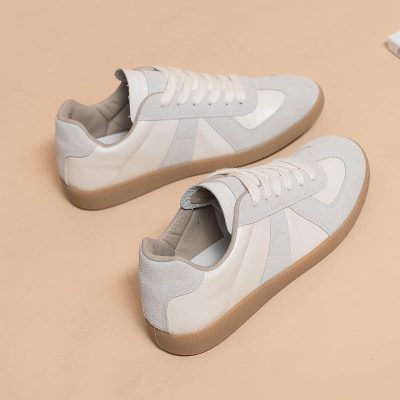Repairing and replacing heel soles can be a cost-effective and rewarding DIY project. Here’s a step-by-step guide to help you through the process:
Materials and Tools You’ll Need
- Replacement Soles or Heel Tips: Available at shoe repair shops or online.
- Shoe Glue or Contact Cement: A strong adhesive specifically for shoes.
- Sandpaper: Medium to fine grit for preparing surfaces.
- Utility Knife or Scalpel: For cutting and trimming.
- Pliers: For removing old nails or staples.
- Hammer: For securing nails if needed.
- Nails or Screws: Specifically for shoes (optional).
- Clamps or Heavy Objects: To hold the sole in place while the glue dries.
- Marker or Chalk: For tracing and marking.
- Protective Gloves: To protect your hands during the process.
Step-by-Step Guide
1. Assess the Damage
- Check the Soles: Determine whether the entire sole needs replacement or just the heel tips.
- Inspect for Other Issues: Look for additional damage such as loose stitching or worn-out insoles that might also need repair.
2. Remove the Old Soles or Heel Tips
- Heel Tips:
- Use pliers to pull out the old heel tips. Wiggle them gently until they come loose.
- If necessary, use a utility knife to cut around the edges and remove any remaining pieces.
- Soles:
- Use the utility knife to cut through the adhesive or stitching holding the sole in place.
- Carefully peel away the old sole, using pliers to remove any nails or staples.
3. Prepare the New Soles or Heel Tips
- Trace and Cut:
- Place the shoe on the new sole material and trace around it with a marker or chalk.
- Cut out the new sole or heel tip using the utility knife or scalpel.
- Sand the Surfaces:
- Lightly sand the bottom of the shoe and the new sole or heel tip to create a better surface for adhesion.
4. Apply the Adhesive
- Choose the Right Glue: Use a strong shoe glue or contact cement.
- Apply Evenly:
- Spread the adhesive evenly on both the shoe and the new sole or heel tip.
- Follow the instructions on the glue for drying times; contact cement usually requires you to let it dry until it is tacky to the touch.
5. Attach the New Soles or Heel Tips
- Press Firmly:
- Align the new sole or heel tip with the shoe and press firmly into place.
- Use clamps or heavy objects to hold the sole in place while the glue dries.
- Allow to Dry:
- Let the glue cure for the recommended time on the adhesive instructions, usually 24 hours.
6. Secure with Nails or Screws (Optional)
- For Extra Security:
- If the original soles were attached with nails or screws, you might want to add a few for extra security.
- Use a hammer to gently tap the nails into place, or screw them in with a screwdriver.
7. Finish and Trim
- Trim Excess Material:
- Once the glue is fully dried, use the utility knife to trim any excess material from the edges of the sole or heel tip.
- Smooth Edges:
- Sand the edges lightly to ensure they are smooth and even.
Tips for Success
- Work in a Well-Ventilated Area: Shoe glue and contact cement can have strong fumes.
- Test Fit: Before applying glue, test fit the new sole or heel tip to ensure it matches perfectly.
- Use Quality Materials: Invest in high-quality replacement materials for better durability.
- Take Your Time: Rushing the process can lead to mistakes and a less durable repair.
Conclusion
Repairing and replacing heel soles at home can save you money and extend the life of your favorite shoes. With the right tools, materials, and a bit of patience, you can achieve professional-looking results and enjoy your heels for many more wears.


















